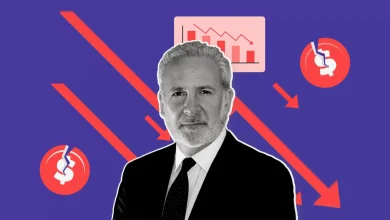
In a bold effort to rejuvenate its weakening economy, China has unveiled a comprehensive plan worth 10 trillion yuan (approximately $1.4 trillion). This strategic initiative allows local governments to refinance their debt, introducing additional stimulus measures to counteract potential economic volatility, especially with the anticipated return of Trump to the White House.
Efforts to Stabilize a Faltering Economy
China, the world’s second-largest economy, has faced significant challenges over the past year. These include persistent deflationary pressures, sluggish demand, a crippling property crisis, and increasing financial strains on local governments. The economic outlook remains uncertain, as Trump has threatened to impose tariffs exceeding 60% on all Chinese imports.
Finance Minister Lan Fo’an announced during a recent press conference that a borrowing cap of 6 trillion yuan (around $838 billion) would be set over three years. This measure aims to assist regional governments in replacing their so-called “hidden debt,” which is typically owed by risky local government financing platforms backed by cities or provinces.
In addition, local governments will have access to a separate 4 trillion yuan ($558 billion) quota through special local bonds over five years. This initiative, revealed after a five-day meeting of China’s top legislative body, the Standing Committee of the National People’s Congress (NPC), seeks to alleviate debt burdens.
Debt swaps are designed to repair damaged balance sheets and act as a stabilizing force for growth, rather than serving as a powerful growth stimulant. By refinancing local government debt, interest expenses are minimized, freeing up resources for other governmental expenditures, according to Mark Williams, Chief Asia Economist at Capital Economics. However, this package represents merely about 0.5% of the current gross domestic product (GDP) spread over the plan’s five-year span.
But Will It Make Any Difference?
Despite the ambitious fiscal announcement, skepticism remains. Williams noted, “Clearly, that’s not going to make any appreciable difference.” The package has been a letdown for those anticipating significant stimulus.
Shehzadh Qazi, Managing Director of China Beige Book, expressed doubts, stating, “I don’t think this does anything to actually stimulate growth, not at least in a way that’s going to be meaningful for markets.” The tight pandemic restrictions, extended over years, coupled with a real estate crisis, have depleted local government treasuries. This has left authorities across China grappling with massive debt, hindering their ability to initiate economic growth.
The dire financial situation has resulted in some cities struggling to provide basic services, with the looming risk of defaults becoming a growing concern. This scenario underscores the urgent need for effective economic intervention.
China’s Massive Hidden Debt
Lan disclosed that, as of the end of 2023, China’s hidden debt balance stood at a staggering 14.3 trillion yuan ($1.99 trillion). By 2028, officials aim to drastically reduce this amount to 2.3 trillion yuan ($320 billion).
While some may be disappointed by the NPC meeting’s lack of approval for an extensive fiscal package, such expectations are deemed unrealistic. The policy objective is to meet GDP growth targets and mitigate significant risks, rather than significantly inflating the economy.
Following a summer marked by gloomy economic news, China’s leader, Xi Jinping, opted to proceed with a crucial stimulus package, primarily focused on monetary measures, in late September. Since then, economists have anticipated further government actions to help revive the struggling economy.
As China navigates these economic challenges, the success of its strategic plan hinges on effective implementation and adaptability to evolving global economic dynamics. The coming months will be critical in determining whether these measures can steer the nation towards a more stable economic future.






